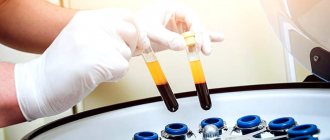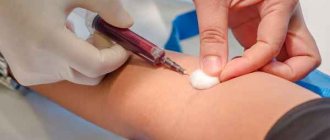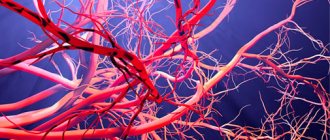As everyone knows, chlorine is dangerous. In gaseous form, it has a suffocating effect and has a toxic effect on the body. For the first time, it was used in the form of chemical weapons! But in addition to its aggressive properties, the mineral also exhibits positive effects.
The use of chlorine, for example, allows us to disinfect drinking water and protects us from many troubles that could be associated with drinking ordinary non-chlorinated water.
Along with drinking water, residual chlorine ions enter the body, but this is not a problem, because chlorine is necessary to maintain a number of processes occurring in the body. Like many other minerals, it is vital and irreplaceable.
Biological role of chlorine
Functions of chlorine:
• Working in a “trio” with sodium and potassium, chlorine is involved in maintaining the water-salt balance of the body. It retains the optimal amount of fluid in the body and is responsible for its distribution inside and outside cells, in blood vessels and tissues. • Takes part in the transport of various molecules into and out of the cell. • Improves digestion, since chlorine is a component of gastric juice. • Participates in the functioning of the kidneys, removing toxins and metabolites from the body. • Protects the liver from obesity. • Responsible for the full functioning of the brain along with other, very numerous elements and connections. • Helps maintain constant blood pressure.
Insufficiency and excess of chlorine in the body
Considering that foods prepared for future use contain salt, and tap water is purified using chlorine, a lack of chlorides in a healthy body is a rare occurrence. However, macronutrient deficiency often occurs against the background of pathological function of internal organs.
Causes of chlorine deficiency in the body:
- prolonged adherence to salt-free diets, fasting;
- increased sweating:
- conditions accompanied by dehydration (vomiting, frequent urination);
- abuse of laxatives, corticosteroids and diuretics;
- artificial feeding of infants;
- disruption of the adrenal glands;
- inflammation and other diseases of the digestive tract (perforated ulcers of the duodenum and stomach, peritonitis);
- pathologies associated with an increase in the concentration of intercellular substance;
- adrenocortical insufficiency.
These factors in 80% of cases provoke destabilization of the acid-base balance, which entails a disruption of metabolic processes in the body.
Symptoms of hypochloremia:
- drowsiness, lethargy;
- muscle weakness;
- hair loss;
- slowing down of thinking abilities;
- “crumbling” of teeth;
- swelling;
- decreased blood pressure;
- loss of appetite, weight;
- nausea, vomiting;
- increase in residual nitrogen concentration in the blood;
- convulsions;
- dry mouth;
- "memory losses;
- urinary disorders.
A sharp decrease in chlorine in the blood against the background of acute hypochloremia is fraught with the development of a serious condition, including coma or death.
Excess chlorine occurs in 80% of cases among people working in the pharmaceutical, chemical, pulp and paper and textile industries. Remember, inhalation of concentrated chlorine vapor has a detrimental effect on the human body due to inhibition of the respiratory bronchial trunk.
In everyday life, an overdose of a macroelement is practically impossible, since 90-95% of the substance is excreted in the urine, 4-8% in feces, 1-2% in sweat.
Let's consider what factors provoke hyperchloremia (excessive increase in the concentration of chlorine in the blood).
- Acute renal failure.
- Diabetes insipidus.
- Prolonged diarrhea.
- Salicylate poisoning.
- Renal tubular acidosis.
- Hyperfunction of the adrenal cortex.
- Damage to the hypothalamus.
- Abuse of androgens, corticosteroids, estrogens, thiazides.
In addition, disinfection of drinking water with chlorine leads to the formation of carcinogenic compounds (chloroform, chlorophenol, chlorides) in it, which provoke the development of respiratory diseases, gastritis, and pneumonia.
Signs of hyperchloremia:
- acrid dry cough;
- chest pain;
- pain in the eyes;
- dyspeptic disorders: nausea, vomiting, dry mouth;
- lacrimation;
- Strong headache;
- heaviness in the stomach;
- flatulence.
If hyperchloremia is not stopped for a long time, water accumulates in tissues and organs, which leads to a persistent increase in blood pressure. In severe cases, an excess of the substance in the body is accompanied by a rise in body temperature and toxic pulmonary edema. Reducing the amount of salt consumed, as well as monitoring the quality of the water you drink, will help stabilize the water-salt balance.
To dechlorinate a liquid, it is advisable to use multi-level purification mechanisms, carbon filters, boil or settle it for 6–8 hours.
Chlorine: price and sale
Minimal amounts of chlorine are present in many dietary supplements. If you are interested in high-quality and well-composed biocomplexes, explore the assortment of our store. We can offer you the best vitamins and dietary supplements from domestic and foreign manufacturers. You can buy them at the best prices and with fast delivery to any city in the country.
Also on our website you can get a free consultation with a nutritionist on taking dietary supplements and vitamins.
There is a toll-free number for regions
8 800 550-52-96.
Daily norm
For healthy people, the daily need for chlorine is 4000 – 6000 milligrams.
With a balanced diet, the compound is supplied in the required amount with food. Today, the upper permissible limit for chlorine consumption has not been established, but the minimum dosage is at least 800 milligrams per day.
For children, the daily need for chlorides varies from 300 to 2300 milligrams, depending on the age of the child.
The daily dosage of a macronutrient is:
- for infants up to 3 months – 300 milligrams;
- for infants 4 – 6 months – 450 milligrams;
- for babies up to one year – 550 milligrams;
- for children from 1 to 3 years – 800 milligrams;
- for preschoolers (5 – 7 years old) – 1100 milligrams;
- for schoolchildren from 7 to 11 years old – 1700 milligrams;
- for adolescents under 14 years old – 1900 milligrams;
- for boys from 14 to 17 years old – 2300 milligrams.
The need for chlorine increases with hot weather, intense sports, increased water consumption, and excessive sweating.
The benefits of chlorine
The benefits of chlorine are as follows:
- prevents dehydration;
- eliminates swelling;
- rids the body of waste and toxins;
- affects joint flexibility;
- awakens appetite;
- allows the body to absorb food;
- normalizes blood pressure;
- improves the functioning of the liver and cardiovascular system.
Toxicity
Chlorine is a toxic, asphyxiating gas that, if it enters the lungs, causes burns of lung tissue and suffocation. It has an irritating effect on the respiratory tract at a concentration in the air of about 6 mg/m³ (that is, twice the threshold for the perception of the smell of chlorine).
The maximum permissible concentrations of chlorine in atmospheric air are as follows: average daily - 0.03 mg/m³; maximum single dose - 0.1 mg/m³; in the working premises of an industrial enterprise - 1 mg/m³.
When working with chlorine, you should use protective clothing, a gas mask, and gloves. For a short time, you can protect the respiratory organs from chlorine entering them with a cloth bandage moistened with a solution of sodium sulfite Na2SO3 or sodium thiosulfate Na2S2O3.
Chlorine was one of the first chemical agents used by Germany in World War I, first used in 1915 during the Battle of Ypres.
Lack of chlorine
Hypochloremia is an insufficient level of chlorine in the blood. This condition is rare, as it usually occurs in excess. After all, chloride is part of table salt. And it is present in almost all products and prepared dishes.
However, the following factors can cause hypochloremia:
- prolonged fasting;
- hyperhidrosis;
- Cushing's syndrome;
- use of laxatives and diuretics;
- salt-free diet;
- kidney diseases;
- food poisoning causing vomiting and diarrhea;
- burns affecting a large area of skin;
- heart failure that has progressed to the chronic stage;
- artificial feeding;
- Addison's disease;
- stomach ulcer;
- skull injury affecting the hypothalamus.
A lack of chlorine is indicated by:
- convulsions;
- hair loss;
- crumbling teeth;
- drowsiness;
- swelling;
- lack of appetite;
- increased body temperature;
- exhaustion;
- depression;
- varicose veins;
- lack of coordination;
- dry skin;
- nausea;
- decrease in blood pressure.
Is chlorine harmful?
Chlorine in its pure form is not just dangerous, but lethal - it is no coincidence that it was used on the fronts of the First World War as a massive combat gas. But currently, employees of various laboratories and industrial enterprises can come into contact with a gaseous form of chlorine. This is work in conditions of particular risk, because even short-term contact with chlorine causes severe irritation of the mucous membranes of the throat and nose, coughing, nausea, vomiting or bleeding, 8-hour exposure to chlorine at a concentration of 2.9 mg/m2 leads to significant functional changes in lungs, up to the development of a fatal tumor. However, it should be remembered that in the water that flows from the tap or is chlorinated in swimming pools, the concentration of this type of substance is very low. So much so that water from many city taps can be drunk just like bottled water.
Allergic manifestations
Sometimes an individual reaction known as a chlorine allergy occurs. Sometimes this is due to exposure to too high concentrations of the substance (for example, in an improperly disinfected swimming pool), sometimes it is the result of personal predisposition.
The main symptoms of a chlorine allergy are:
- skin rash, itching, burning;
- redness, swelling;
- dryness, flaking of the skin;
- irritation of the mucous membranes of the throat and nose, cough, runny nose;
- irritation of the conjunctiva, lacrimation;
- abdominal pain, diarrhea, vomiting
It is important to note that allergy is a misnomer because chlorine is not an allergen and does not cause the immune system to release IgE antibodies.
Treatment of “chlorine allergy”
Treatment of so-called “chlorine allergy” is usually purely symptomatic. The main drugs used are antihistamines—medicines that block the action of histamine in the body and ease the inflammatory response. However, such measures in no way affect the cause of the disorder.
Since an allergy to chlorine is not a typical allergy, so-called immunotherapy, that is, a treatment that involves increasing the allergy's tolerance to increasingly stronger doses of this substance, is not used in this case. The most effective prevention is to prevent the person experiencing the adverse reactions from coming into contact with chlorine.
Chlorine powder
In the right form, chlorine can be used to disinfect (like a backyard pool) on its own. There are two types of agents available in stores that contain this element or its compounds, making it convenient and safe to use. This:
- powdered chlorine;
- chlorine tablets
Chlorine in powder, or rather in granules, most often has a shock effect. It does not contain a so-called stabilizer, it is strong but not durable, which means that after using it you can take a bath in a disinfected pool relatively quickly and safely.
Properties of chlorine
Chlorine occupies 17th place in the periodic table of Mendeleev. They first learned about it in 1774. Chlorine is a reactive non-metal and belongs to the group of halogens. “Real” chlorine under normal conditions (0 degrees) is a yellow-green poisonous gas with a suffocating odor. In general, in nature the element is found in various mineral compounds. The main reserves of chlorine are concentrated in the salts of the oceans and seas. Our body contains approximately 95 g of this substance.
Symptoms of deficiency
Determination of the amount of chloride ions in the blood plasma is prescribed if a shift in acid-base balance is suspected. An imbalance can be the result of physiological processes, pathologies of various body systems, or as a result of taking medications.
To determine chloride concentration indicators, ion-selective electrodes are used. This method of analysis is called an ionogram and is carried out taking into account the concentration of other electrolytes - potassium, sodium, calcium cations, as well as bicarbonates.
Normally, chlorine concentrations in the blood are strictly monitored by the human endocrine system. The mechanism is similar to sodium metabolism and is closely related to it. Hormones of the adrenal glands and parathyroid glands are responsible for the metabolism of chlorine. The amount of element compounds excreted in the urine is also taken into account. The norms for the content of chlorides in the blood are measured in mol/l and practically do not change for different age groups. This allows you to maintain a constant blood pH.
- In infants up to six months, the norm is 96-116 mmol/l, in children up to one year it is 95-115 mmol/l.
- For children over one year old and adolescents under 15 years of age, the norm is 95-110 mmol/l.
- For adults (regardless of gender) it is 97-108 mmol/l.
The material is collected in the morning, on an empty stomach. Before the test, you must notify your doctor about taking medications; smoking is prohibited half an hour before the test.
The concentration of chlorine compounds in urine depends on the patient’s age, the presence of kidney pathologies, and hormonal imbalance:
- for babies up to 6 months 0.5-2.5 mmol/l;
- for children and adolescents 0.5-4.0 mmol/l;
- for adults, regardless of gender, the norm is 0.6-5.5 mmol/l.
Test results may be affected by medications. The level of chlorine in the blood increases with hormonal therapy with estrogens and androgens, cortisone derivatives, and taking NSAIDs. A decrease in indicators can be observed when taking diuretics and glucocorticoids.
Possible causes and signs of chlorine deficiency
According to a few clinical studies, hypochloremia in humans is quite rare. The risk of a decrease in the concentration of chlorine in the blood in adults increases with metabolic disorders, and in children with artificial feeding.
Reasons leading to hypochloremia:
- dehydration of the body caused by food poisoning. With uncontrollable vomiting and diarrhea, the body quickly loses fluid with electrolyte ions dissolved in it;
- shift in electrolytic balance, increase in plasma sodium concentration;
- Cushing's syndrome;
- eclampsia;
- taking laxatives and diuretics;
- heat stroke, loss of fluid through the sweat glands with increased body and environmental temperature;
- violation of intestinal absorption activity;
- kidney pathologies;
- insufficient secretion of antidiuretic hormone;
- respiratory alkalosis, accompanied by loss of alkalis;
- extensive burns with copious exudate;
- damage to the hypothalamus as a result of skull trauma;
- congestive heart failure, accompanied by accumulation of fluid in the cavities (edema);
- a diet that excludes sodium chloride;
- hyperventilation of the lungs caused by chronic pathologies of the organ, emphysema;
- Addison's disease;
- water intoxication.
Symptoms of hypochloremia depend on the type of pathology that caused it. Often, a drop in plasma chlorine concentration is accompanied by muscle weakness, a feeling of dry mouth, depression, drowsiness, and lack of appetite.
In more severe forms, dementia develops, mental activity is impaired, and hair and teeth fall out. A rapid decrease in chloride ions can provoke coma and lead to death. As therapy, complex preparations are used based on an isotonic solution, which is administered intravenously until the patient’s standing is normalized.
Sources of chlorine
A natural source of macronutrients, in addition to chlorinated water, is sodium chloride or regular table salt.
With this product, up to 90% of the daily requirement of the compound enters the human body. In addition, it is present in seafood, grains, animal proteins, vegetables, fruits and greens. Table No. 1 “Natural sources of chlorine”
| Product name | Chlorine content in 100 grams of product, milligrams |
| Table salt | 59 000 |
| Rye bread | 1020 |
| Hard cheese | 880 |
| White bread | 620 |
| Butter | 325 |
| Beef tongue | 250 |
| Pork kidneys | 185 |
| Fish (hake, capelin, pollock, saury, herring) | 170 |
| Oysters | 165 |
| Cottage cheese 9% | 150 |
| Olives | 136 |
| Rice | 133 |
| Cow's milk (whole) 3 – 4% | 115 |
| Kefir (homemade) 3 – 4% | 110 |
| Chicken egg | 105 |
| Pasteurized milk | 100 |
| Oatmeal | 70 |
| Buckwheat | 95 |
| Boiled beets | 60 |
| Peas | 55 |
| Boiled potatoes | 40 |
| Boiled carrots | 35 |
| Cabbage | 30 |
| Apples | 25 |
| Pears | 10 |
Interestingly, adding a pinch of salt to a finished dish increases the concentration of chlorine in food by 3 to 5 times.
The importance of chlorine during pregnancy and childhood
Since the mother's body produces more hormones during pregnancy, fluid retention occurs in the body. Because of this, more sodium is retained in the tissues, which leads to a shift in ionic equilibrium. The optimal ratio of chlorine and sodium ions is 1:2; as the concentration of one electrolyte increases, the level of the other will also rise.
Edema provokes an increase in blood pressure, which adversely affects the course of pregnancy. Expectant mothers need to reduce their intake of table salt to 3 g per day. The use of chlorinated water and chlorine-containing household chemicals can cause poisoning, miscarriage and fetal mutations in the early stages. Children also need to limit the amount of salt so as not to disrupt the functioning of the kidneys and nervous system.
The benefits and harms of chlorine
The benefits of chlorine can hardly be overestimated. This element regulates the acid-base balance, promotes the removal of excess fluid and salts, activates digestion processes, and cleanses the liver of fat. On the other hand, scientific research shows that with prolonged exposure to chlorine and its excess, free radicals begin to form in the body. They belong to the group of carcinogenic substances and cause irreparable damage to cells and tissues. Both chlorine deficiency and excess are not very good for our body, so it is important to monitor its amount.
Norms of daily chlorine consumption for various categories of people
Since excess and deficiency of chloride ions is extremely rare, recommended intake rates have not yet been developed. Empirical need for different age groups:
- infants up to three months – 300 mg;
- children under one year old – 450-600 mg;
- children aged 1-2 years - 800 mg
- children 3-7 years old - 900-1100 mg;
- schoolchildren and adolescents 1600-1900 mg;
- adults - 2300 mg.
The required minimum rate to maintain ionic equilibrium is 800 mg. Even when limiting the amount of table salt in the diet to 1 g, a person receives 1600 mg of chlorine from other food sources.
An increased dose of the nutrient will be required during active loss of moisture due to increased sweating (during long workouts, in hot weather). Also, an increased amount of macronutrients is necessary for gastrointestinal diseases.
Use of chlorine
Chlorine is a chemical element used to produce hydrochloric acid, not only in the stomach.
Hydrochloric acid is also obtained outside the body using the 17th substance. The compound is useful in tanning and dyeing leather, in the production of activated carbon, synthetic dyes and organic intermediates.
Electroplating cannot be done without chlorine. As part of hydrochloric acid, the element is needed in the manufacture of various adhesives and hydrolytic alcohol.
The disinfecting characteristic of the element is now useful not in hospitals, but in the treatment of tap water.
What threatens a person with a lack of chlorine?
If there is not enough chlorine in the body, its acid-base balance and carbohydrate metabolism are disrupted. A person’s hair may fall out and teeth may crumble, the skin ages and becomes sharply wrinkled. Dehydration may occur, during which the mouth becomes dry, the person may feel sick, vomit, and the process of urination is disrupted. The kidneys and gastrointestinal tract can no longer function normally, which disrupts the functioning of other organs. Lack of chlorides in the body can lead to loss of strength, balance and appetite. Such people begin to complain of drowsiness, memory loss, and inability to concentrate.
As it turned out as a result of experiments conducted by scientists at the Max Planck Institute for Neurobiology in 2012, chlorides are necessary for the normal functioning of nerve cells. Experiments on mice have shown that a lack of chlorides in the body can lead to overexcitation of nerve cells and aggravation of dangerous diseases such as epilepsy.
The cause of a lack of chlorine in the body can be low-salt or salt-free diets, especially long-term ones, more than a week. The state of health with a lack of chlorine deteriorates even more if the person previously suffered from hypertension or poor kidney function.
Products with the highest chlorine content, availability, influence of heat treatment
Up to 90% of the nutrient enters the body with table salt and products containing this ingredient - canned food, sausages, sauces. A normal diet more than covers a person’s daily need for chlorine. The nutrient is completely absorbed in the intestines; its reserves can be replenished from various foods. Rye and white bread, black radish, dairy products, cheeses, fish, olives, meat, and seaweed are rich in chlorine. All other foods also contain some amount of this macronutrient.
Heat treatment has virtually no effect on the safety of the nutrient, since it is represented by compounds of inorganic nature, which dissociate in an aqueous environment to form CI— ions. Boiling chlorinated water was previously used to remove chlorine. Recent studies have shown that heating accelerates the removal of active chlorine, but its residues actively react with organic compounds. As a result, highly toxic substances are formed. Therefore, it is better to use a filtration system to purify water.









